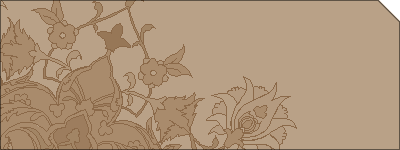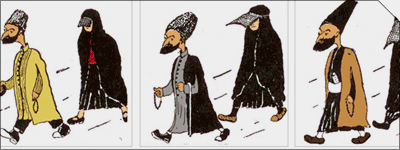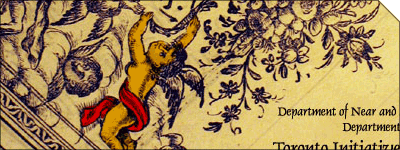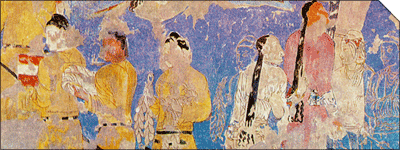| |
- WEDNESDAY NOVEMBER 9, 2005 | 4:00 P.M.
- Room 208N, Munk Centre
- 1 Devonshire Place - St. George campus
Director of Research at the Centre National de la Recherche Scientifique (CNRS, Laboratory of Archaeology, Ecole Normale Supérieure, Paris); Professor
at the Ecole Pratique des Hautes Etudes (Sorbonne, Paris), section “Religious Sciences”; Chair, Religions of the ancient Iranian world; Director of the
French-Uzbek Archaeological Mission at Samarkand; Author of Les pratiques funéraires dans l’Asie centrale sédentaire de la conquête grecque à l’islamisation (Paris,
1984); A History of Zoroastrianism, vol. III: Zoroastrianism under Macedonian and Roman Rule, (Leiden, 1991), in collaboration with Mary Boyce and Roger Beck);
and La geste d’Ardashir fils de Pâbag (Paris, Éditions a Die, 2003)
Lecture abstract: The high social and administrative status enjoyed in 6th-8th c. Northern China by merchants originating from Sogdian
principalities (Samarkand, Bukhara, etc.) has been established on the basis of written records (Chinese chronicles, Sogdian translations of
religious texts found in China). Hitherto unexpected evidence has been provided, mainly since the 1980’s, by a series of reliefs which once
adorned six tombs of Sogdian dignitaries who died in the last third of the 6th c. They portray the tomb owners engaged in various social
activities (trade, hunt, banquet), and at the same time provide vivid illustrations of their religious sympathies. Quite unexpectedly if one
compares the large amount of Sogdian texts pertaining to these religions, Buddhism and Nestorian Christianity are not at all represented,
though the artists were obviously familiar with Buddhist symbols and adapted them to specific needs of their new commissioners.
Zoroastrian symbols are found in all tombs but one, a fact that can be put in relation with the tomb owners having held the official
position of “sabao”, Sogdian community leaders in charge of the national cult. Besides these symbols, the tomb of Wirkak (d. 579)
provides the earliest evidence of the spread of Manichaeism in China. One anonymous tomb (in the Vahid Kooros collection, now at the
Guimet Museum, Paris) stands apart, as Zoroastrian references are absent and all religious images belonging to the Hindu religion.
|





